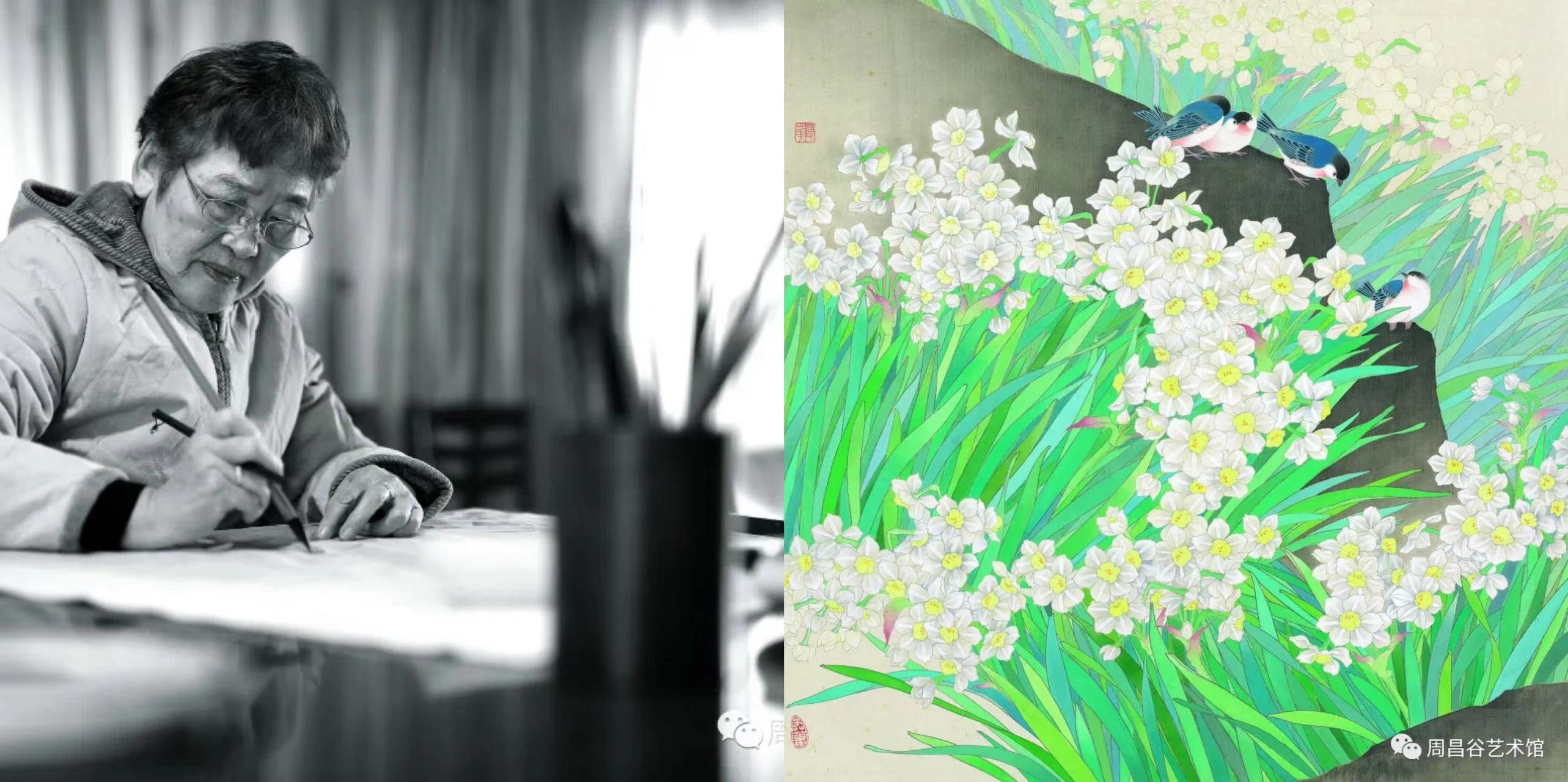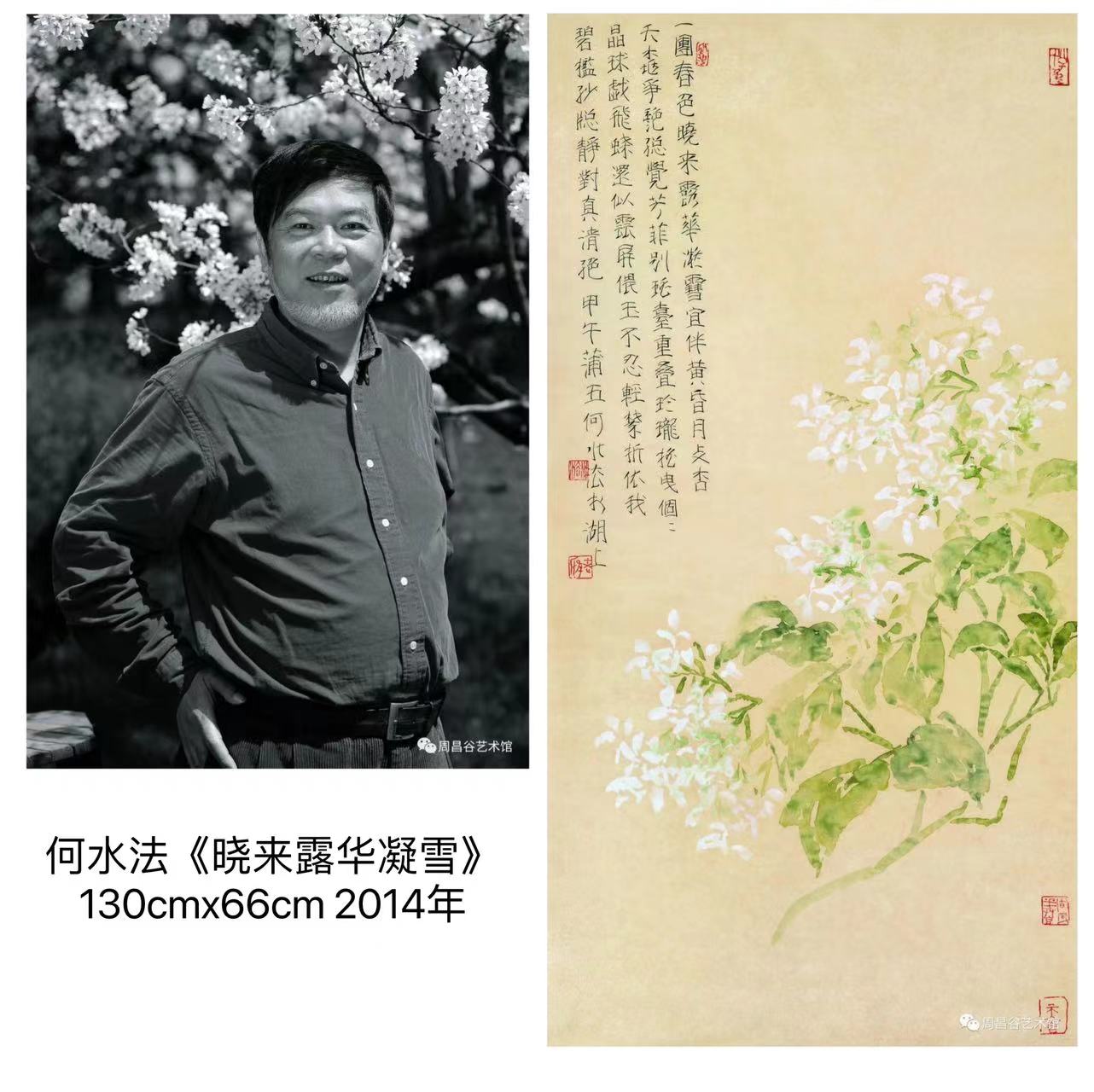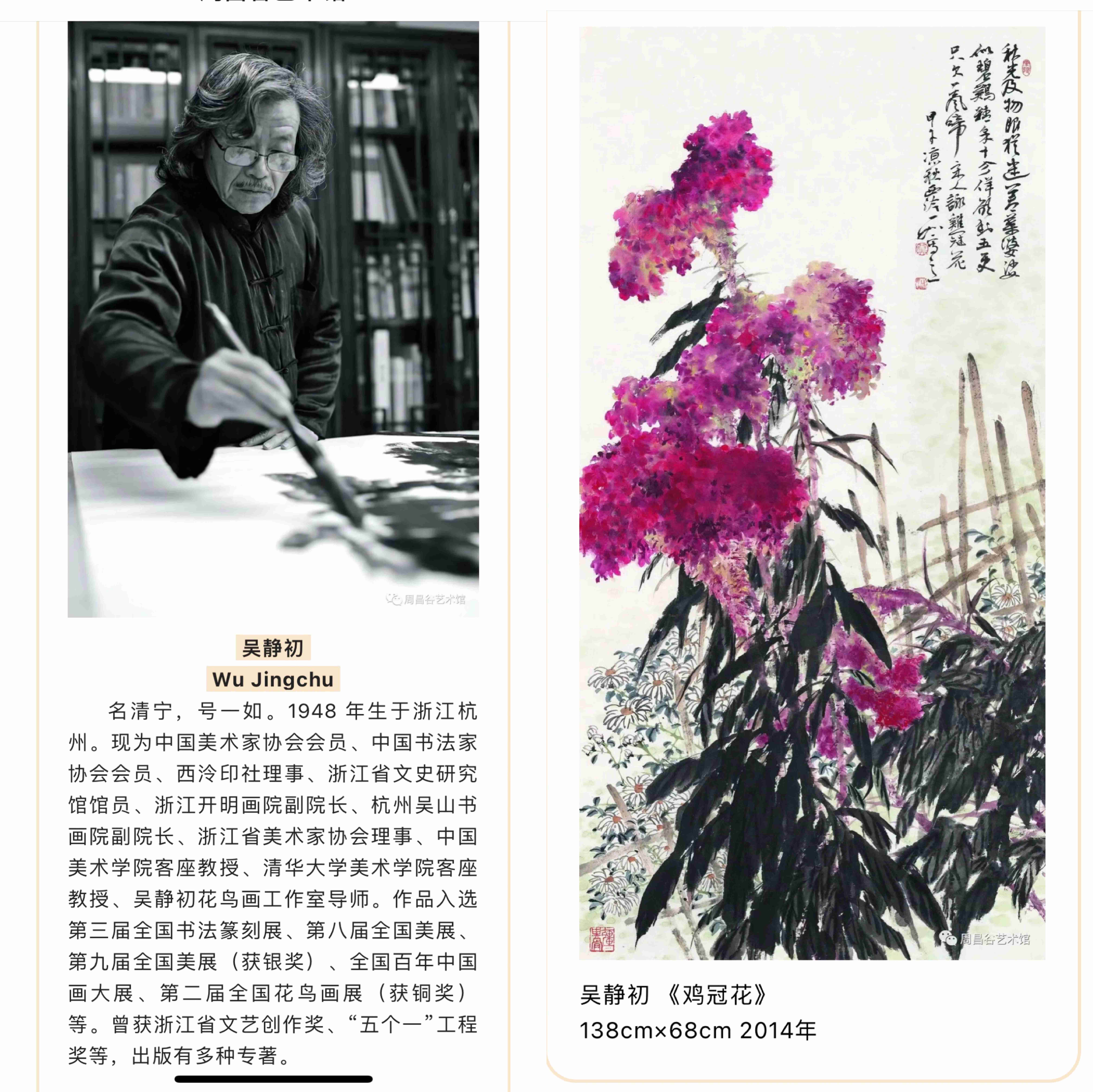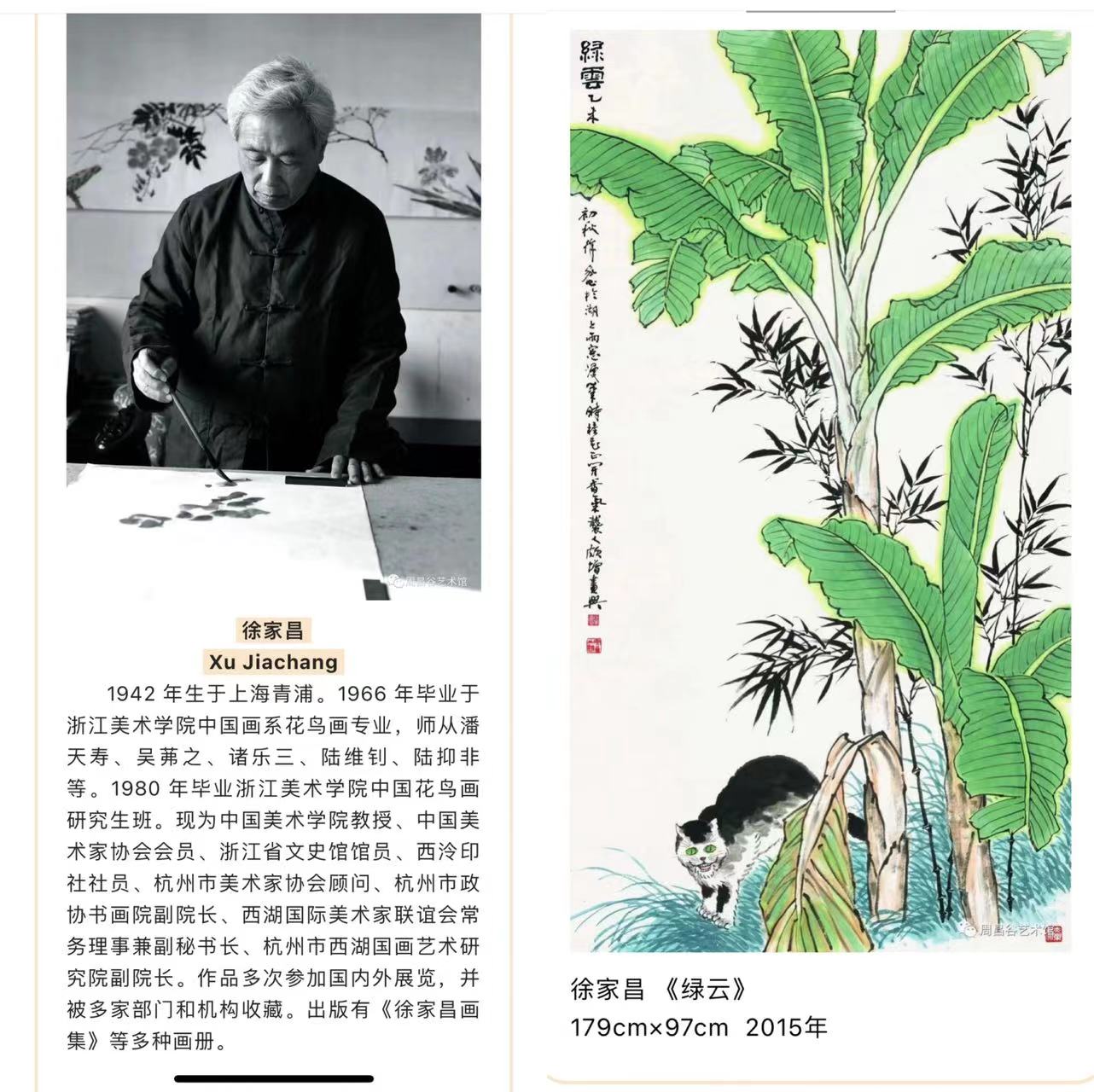An exhibition of 70 excellent Zhejiang Flower-and -bird Paintings is open to the public from May 18 until June 30 in the Zhou Changgu(周昌谷) Art Museum. The Paintings were painted by students and colleagues of Mr. Zhou Changgu during his lifetime. Among them, the eldest is now 85 while the youngest 68. They are Zhu Yingren(朱颖人), Ye Shangqing(叶尚青) , Lu Kunfeng(卢坤锋), Du Manhua(杜曼华), Ma Qikuan(马其宽), Xu JiaChang(徐家昌), Zhang Hao(张浩), Zhang Huasheng(张华胜), Min Xuelin(闵学林), He Shuifa(何水法), Wu Jingchu(吴静初). These artists inherited the fine painting skills of the flower-and-bird paintings from Mr. Zhou Changgu.
The exhibition provides a chance for the local to better appreciate and understand the Chinese flower- and- bird painting. It has also updated my knowledge of Chinese painting.
Their paintings are featured with different styles. Aside from flowers and birds, and delicate seal marks, calligraphy and poems, among the common subjects in this genre are trees, vegetables, fruits, animals, insects and stones.
With regard to styles, there are two different schools in Chinese traditional painting: Fine brushwork(工笔画) and freehand brushwork(写意画).
“Fine brushwork” is a traditional Chinese realistic painting characterized by fine brushwork and close attention to details. In an example such as Du Manhua’s (杜曼华) picture, << Rest小憩>>. We can see some birds resting on the rock surrounded by daffodils. The picture has a lovely composition and beautiful colors. It provides the viewer with a warm and sweet feeling. This painting fully embodies the charm of women artists’ character; careful and perfect.

The “boneless method” (工笔画没骨画法)is one of the forms of the Fine brushworks as can be seen in the painting <<The snow white windmill jasmine晓来露华凝雪>> by He Shuifa(何水法), There are no outlines of the flowers, color is very important in the creation, and then calligraphy and seals create the finishing touches, opposed to the blank space left in the upper right corner. We can read the poem on the left upper side, the written poetry helps us better understand the painter and his attitude to life and gives more details about what the painter wants to express. It compared the white windmill jasmine to butterfly, planted in the courtyard, near the window, the color white like snow, pure and unique. We Chinese consider this the best way to show appreciation of the nature.
一团春色,
晓来露华凝雪,宜伴黄昏月。
文杏夭桃争艳,总觉芳菲别瑶台。
重叠玲珑,摇曳个个,晶球戏飞蝶。
还似云屏偎玉,不忍轻攀折。
依我碧槛纱窗,静对真清绝。

Freehand brush work of the painting <<cockscomb鸡冠花>>by Wu Jingchu(吴静初)combined ink and color to create a perfect image of the flower. The use of ink and color reaches heart’s content; we can see the influence of Qi Baishi(齐白石) and Wu Changshuo(吴昌硕). Besides, in Chinese, the character “冠” means hat, also pronounces “官” , which means “officer” in English, therefor, red cockscomb has the meaning of flourishing, good fortune and a promotion to a higher position.

However, there is no absolute divide between the two schools. From the painting <<碧云>>by Xu JiaChang(徐家昌), we can see that the artist concentrated on true and accurate description of object, the flower is outlined and detailed with color, he also used freestyle to draw the cat and bamboo. (兼工带写),

Common people see colors on the surface level, the level of eyes, but artists choose the doors to the souls, to our heart. Ye Shangqing’s (叶尚青) picture <<bird鸟>> and Min Xuelin’s(闵学林)picture <<If winter comes, can spring be far behind 冬天来了,春天还会远吗>> mainly used ink to draw very simple lines, shapes and dots.

It is considered that the highest state of Chinese painting has “no colors”. Just using ink and water, and any kinds of objects can be drawn on Chinese paper, and creates a certain calm, simple, and elegant sense of beauty. This kind of painting also has a strong philosophical background. As the Daoist saying goes “Five colors make people blind.” the highest state is simplicity and returning to authenticity. So less is more, and the fewer colors the better.
Qi Baishi(齐白石), a celebrated Chinese painter once said: “The excellence of a painting lies in being alike, yet unlike. Too much likeness flatters the vulgar taste; too much unlikeness deceives the world. As artists, they have mastered perfect ink techniques of drawing. However, the journey is long, successful people understand learning never stops, and there are still many possibilities for further development or changing of their painting styles in the future.






Comment